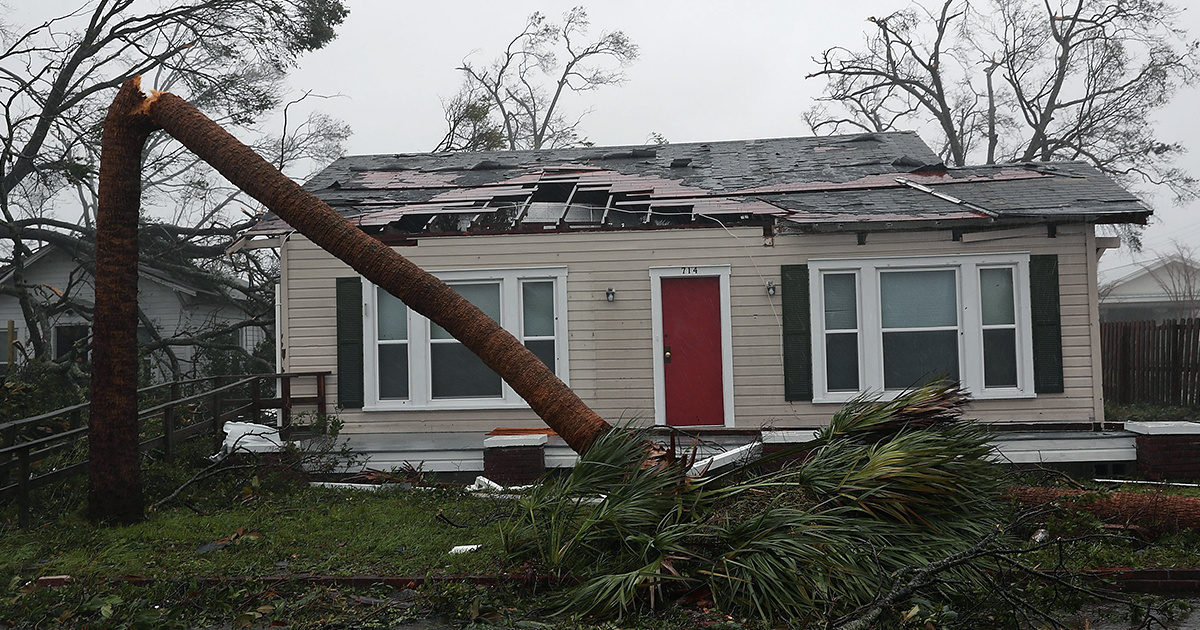
Deadly Hurricane Michael Strongest Storm Ever to Hit Florida Panhandle

Damage from Hurricane Michael in Panama City, Florida. Joe Raedle / Getty Images
Hurricane Michael made landfall as a Category 4 hurricane in the Florida Panhandle Wednesday afternoon, leaving two dead and nearly 500,000 without power as it rammed through Florida, Georgia and Alabama, BBC News reported.
With winds of 155 miles per hour, it was the third strongest storm in recorded history to hit the U.S. and the strongest ever to hit the affected area, The Washington Post reported.
“We are catching some hell,” Timothy Thomas, who stayed with his wife in his home in Panama City, Florida to ride out the storm, told the Associated Press, as BBC News reported.
https://twitter.com/NOAASatellites/statuses/1050113989387190273 caption=”” photo_credit_src=”https://twitter.com/NOAASatellites/status/1050113989387190273″ photo_credit=””
The storm rapidly intensified from a tropical depression Sunday because of warmer than average waters in the Gulf of Mexico, an effect consistent with predictions about the impact of climate change on hurricanes. A 2013 study found that waters in the eastern Gulf of Mexico had gotten warmer in the past century than would be expected given natural variability, The New York Times pointed out.
“There is a pretty strong consensus [among scientists] that the frequency of the high category events like Michael, in most parts of the world, should go up as a result of climate warming,” Massachusetts Institute of Technology atmospheric science professor Kerry A. Emanuel told CNN.
Michael first made landfall near Mexico Beach, Florida at 2 p.m. local time and brought a storm surge of up to eight feet to the coastal city of Apalachicola, BBC News reported.
Winds blew the roofs off of houses in Mexico Beach and further devastated Panama City, where the eye moved next. Windows were blown out of buildings and others were destroyed entirely by wind or downed power lines and trees, CNN reported.
[instagram https://www.instagram.com/p/BoxQllNArIB/?utm_source=ig_embed expand=1]
Most building codes aren’t designed to withstand 155 mile-per-hour winds, Federal Emergency Management Agency Director Brock Long told CNN.
“Unfortunately, this is a hurricane of the worst kind,” Long said.
Both of the reported deaths were caused by falling trees. One man was killed by a tree in Gadsden County, Florida, and a child was killed in Seminole County, Georgia when a tree fell on a home, BBC News reported.
The storm weakened as it headed inland and was downgraded to a tropical storm Thursday. As of Thursday morning it was over eastern Georgia and expected to move into central South Carolina, The Associated Press reported.
While the wind speed has been reduced to 50 miles per hour, winds, potential tornadoes and heavy rain still posed a threat, especially to parts of the Carolinas still recovering from the flooding of Hurricane Florence.
https://twitter.com/NWS/statuses/1050139114237030400 caption=”” photo_credit_src=”https://twitter.com/NWS/status/1050139114237030400″ photo_credit=””
- 'Only A Matter of Time' Before Category 6 Hurricane Hits U.S.
- Louisiana Hurricanes Started 'Vicious Cycle' of Homelessness

 233k
233k  41k
41k  Subscribe
Subscribe 